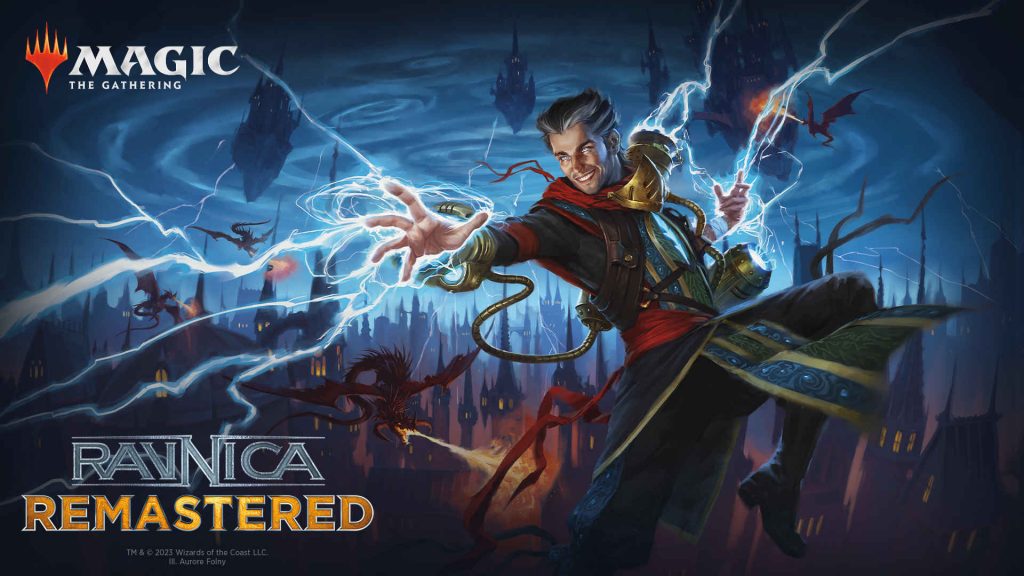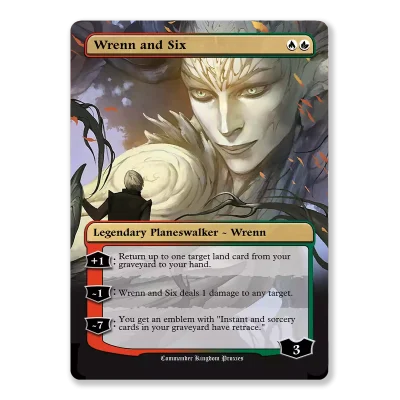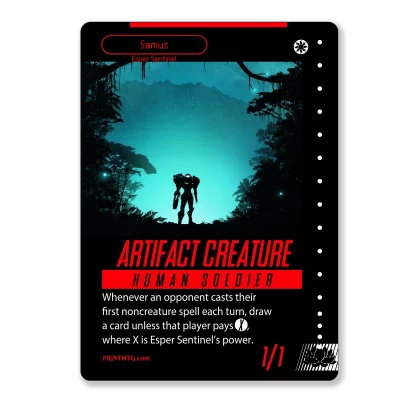The year 2024 has arrived, and we’re commencing it with Ravnica Remastered. Even if you missed all the official advertisements, you’ve probably witnessed the recent controversy involving Magic: The Gathering’s social accounts using AI-generated imagery to promote the set’s Shock lands while initially denying its AI origin. It’s hard to fathom why any set would attempt to pass off an image as non-AI when it clearly is. This incident places Ravnica Remastered at a disadvantage before its release, and that’s not the only challenge it faces; the next set, Murders at Karlov Manor, is already less than a month away.
Comparing Ravnica Remastered to Dominaria Remastered
The good news is that the set itself surpasses the AI-generated image’s quality. However, the bad news is that it falls significantly short when compared to last year’s Dominaria Remastered. This is unfortunate because Ravnica is a captivating plane with a vast array of characters and numerous powerful cards like Doubling Season and Smothering Tithe, neither of which is included in Ravnica Remastered.
The “Mythic Rare Problem”
The set suffers from what we call the “Mythic Rare Problem.” Typically, the mythic rare slot is reserved for the most potent cards in any set, the ones that get players excited to open. While every set may have a few lackluster pulls, even those usually find their place or cater to specific audiences.
While there are indeed some exceptional mythic rares in Ravnica Remastered, the majority of them leave much to be desired. Consider Master of Cruelties, a five-mana black and red 1/4 creature that can reduce an opponent’s life total to one if it connects. It excels in its niche but sees limited play in a few Commander decks due to its inability to attack alongside other creatures.
Another example is one of the two mono-white mythic rares, Gideon Blackblade. It’s a planeswalker that can attack as a creature, buff itself or other creatures, and exile nonland permanents, but its overall power level is mediocre at best. It’s an adequate card, but it won’t excite many players when opened.
Lack of High-Value Reprints
This underwhelming trend extends to most of the mythic rares in Ravnica Remastered. Frankly, this is unacceptable, especially when you consider the omission of cards like Doubling Season and Smothering Tithe, as mentioned earlier. There were other cards that could have been reprinted in this set to make it more appealing, but it seems like Wizards’ primary goal was to reprint Shock lands with a retro frame and call it a day in terms of high-value reprints.
Premium Pricing and Justification
A booster box of Ravnica Remastered costs approximately 50% more than a standard set’s booster box. We’ve previously criticized premium pricing because, let’s be honest, it shouldn’t cost more to produce this set, and with the absence of double-sided cards, it might even be less expensive. If Wizards of the Coast wants to deny using the secondary market to inflate their prices, that’s their prerogative, but we’re here to remind you not to fall for that line.
Wizards attempts to justify the higher price with alternative artworks and frame treatments available in Ravnica Remastered. Retro frames have grown on us, and having a consistent alternate style across sets is appealing. The anime art treatments in this set are visually enticing as well and occasionally reduce the price of the standard card version, but not always. While these variations have their merits, they don’t truly justify the extra cost.
Gameplay Experience
From a gameplay perspective, Ravnica Remastered offers an enjoyable experience. Revisiting sets from Magic: The Gathering’s history in a single drafting session is appealing, especially for newer players who may not have had the chance to draft Shock lands or CloudStone Curio. However, Ravnica Remastered falls short in terms of entertainment compared to most new sets because it lacks new mechanics or interactions to learn. Veteran players might not have a strong incentive to engage in Draft or Sealed formats with this set, especially considering the absence of significant reprints to justify the high pack and box prices.
Final Thoughts on Ravnica Remastered
It’s not that Ravnica Remastered is a terrible set; it just doesn’t live up to its full potential. While it’s true that you can’t put a price tag on the joy of drafting a set, the cost of living is currently exorbitant. A premium set without substantial reprints that have reached inflated secondary market prices simply doesn’t make sense for many players, and it shouldn’t.
If you’re interested in Ravnica Remastered for the gameplay experience, we strongly recommend building a cube with cards that local game stores and playgroups may already have. It offers a more repeatable and cost-effective way to enjoy the set.
An MTG proxy cube is a custom-made collection of Magic: The Gathering (MTG) cards used for drafting and playing Cube format games. In a Cube, the creator selects a specific set of cards from the MTG card pool and assembles them into a single “cube” or set of cards. Unlike traditional Magic decks, each player doesn’t need to own the cards in the cube; instead, proxy cards are used as substitutes for the actual cards. These proxy cards often have printed or handwritten information about the real card they represent.
In Conclusion
In summary, Ravnica Remastered falls short of its potential and is more expensive than it should be based on its contents. While we always advocate for lower costs, especially for a company as profitable as Hasbro (while still laying off employees), the pricing in this case leaves a bitter taste in our mouths. On the bright side, it may deter unnecessary spending, which is probably a good thing in January.





